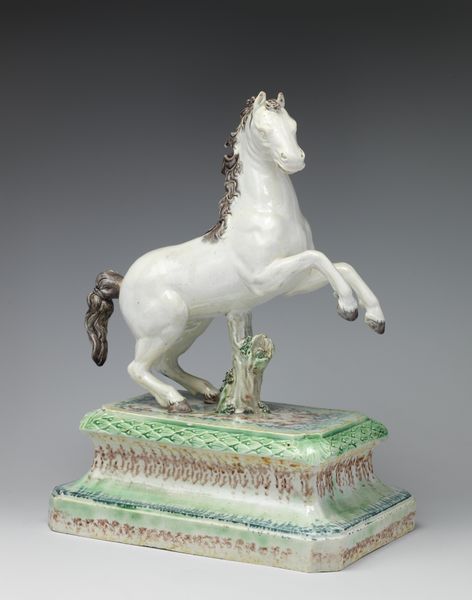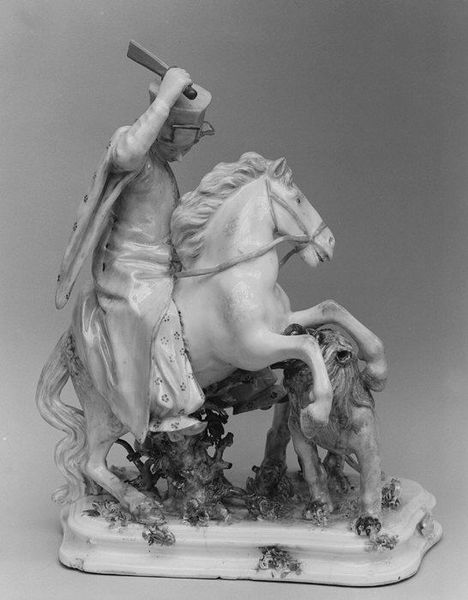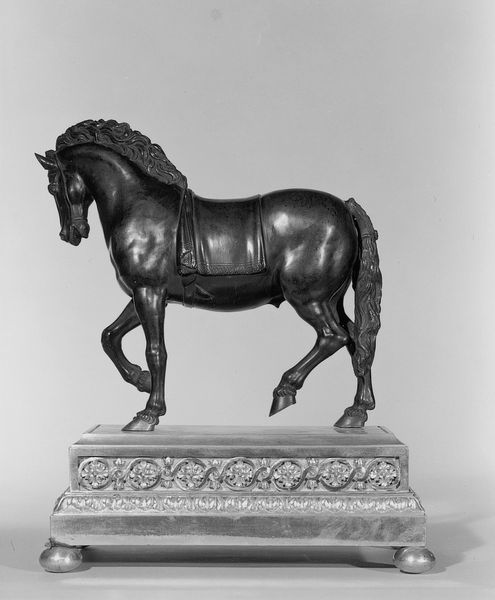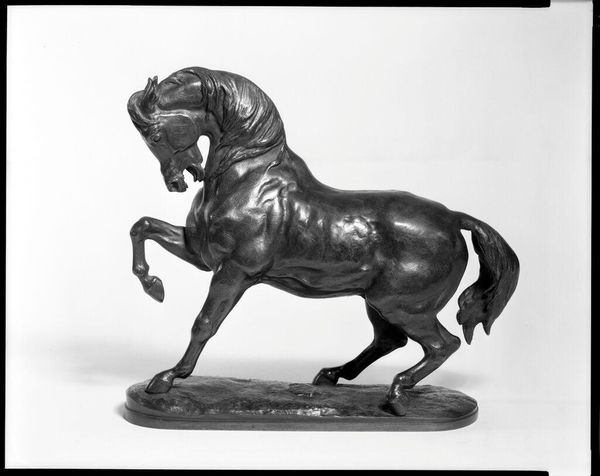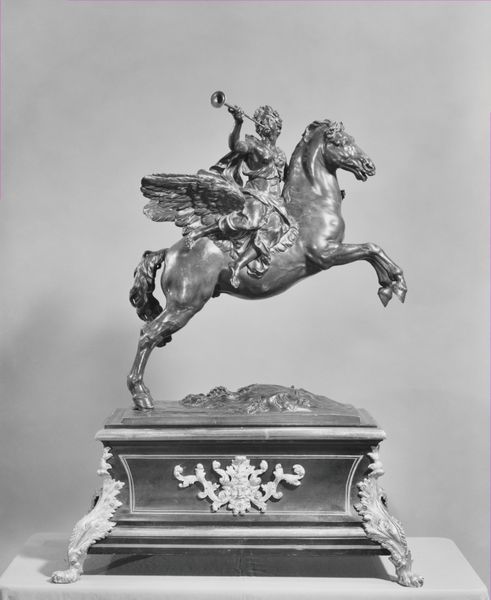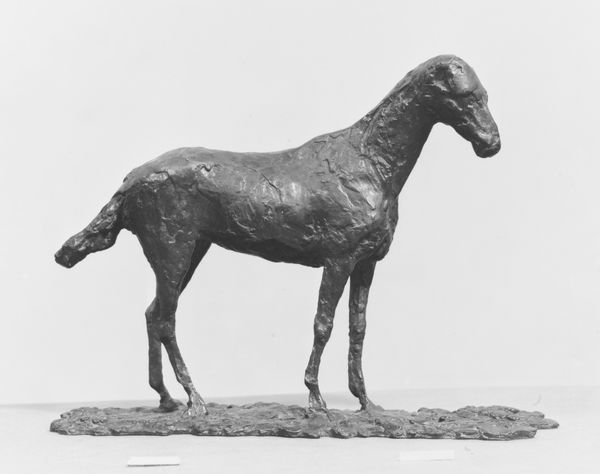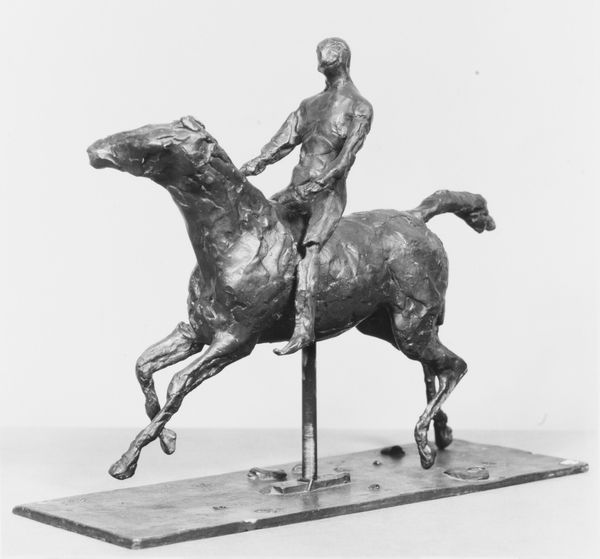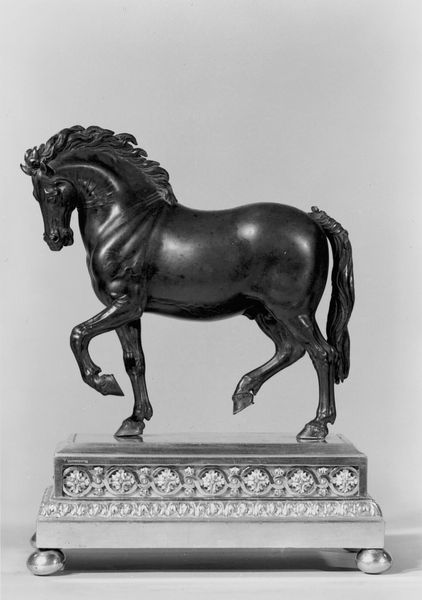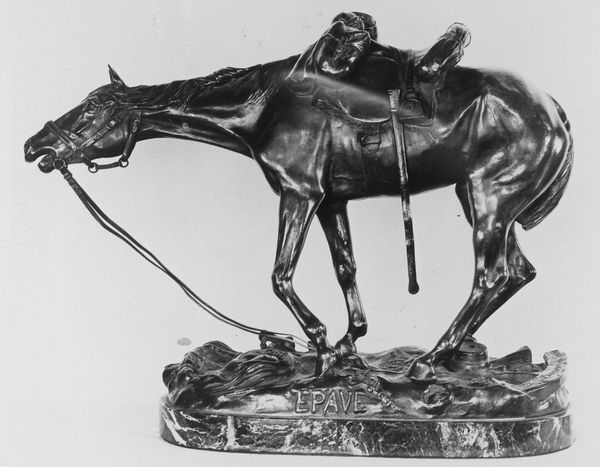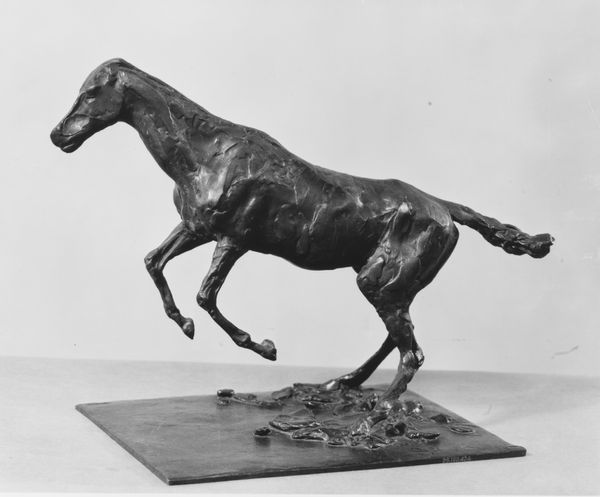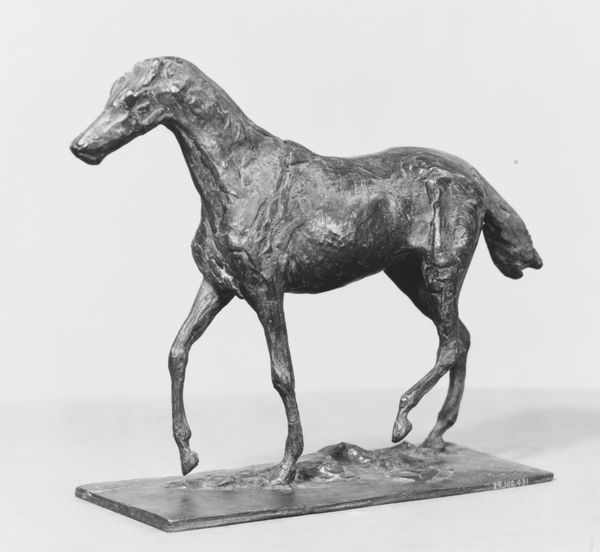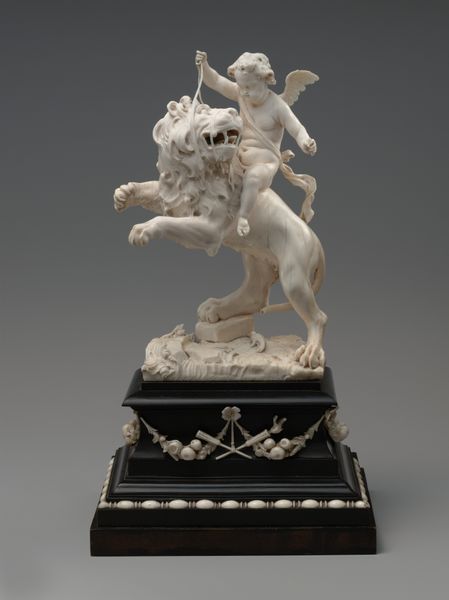
ceramic, sculpture
#
sculpture
#
ceramic
#
figuration
#
sculpture
#
horse
#
decorative-art
Dimensions: Overall: 11 1/4 × 5 3/4 × 8 1/4 in. (28.6 × 14.6 × 21 cm)
Copyright: Public Domain
Curator: Ralph Wood the Younger created this piece, "Rearing Horse," sometime between 1775 and 1785. It's crafted from ceramic. What are your first thoughts? Editor: The immediate impression is one of tension, yet elegance. The horse, frozen mid-rear, is captured in a state of powerful energy. There’s something very theatrical about its posture and the highly ornate base. Curator: It's fascinating how ceramic, a relatively humble material, is elevated here to mimic the grandeur usually associated with bronze or marble. The craftsmanship involved in molding and firing this delicate sculpture shouldn’t be underestimated. Consider the workshops and division of labor required for this sort of output. Editor: Absolutely. The rearing horse motif itself is laden with symbolism, isn't it? Think of military might, nobility, freedom...Horses have been potent symbols of status and power across so many cultures for centuries. Is this intended as an aspirational symbol? Or perhaps a more specific reference? Curator: Possibly both. The burgeoning middle class was keen to emulate the aristocracy in decorative objects. Horses were increasingly popular among wealthy patrons during this period, often tied to notions of equestrian skill and leisurely pursuits that reflected well-being and affluence. But you raise an excellent point about aspiration. Editor: And the "support"—that tree trunk that seems to both prop the horse up but also, visually, ground its wildness... there is some tension there in the symbolic narrative, isn't there? A touch of taming, of constraint. Curator: Good observation! That brings it back to the economic sphere: ceramic objects like these were often created as luxury goods intended for display in domestic spaces; carefully crafted commodities for aspirational and upwardly mobile homes. Its material and means of production cannot be ignored. Editor: So much history—economic and cultural—captured in this seemingly simple form! From the skill of the maker to the social ambitions it represented. Curator: Indeed! An eloquent sculpture where its cultural narrative speaks as vividly as its materiality.
Comments
No comments
Be the first to comment and join the conversation on the ultimate creative platform.
